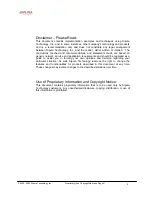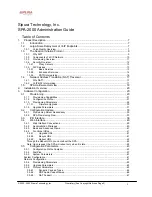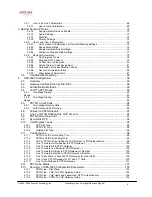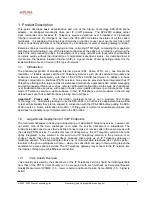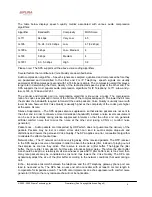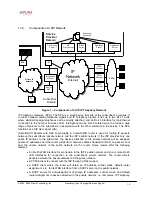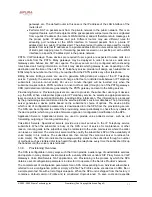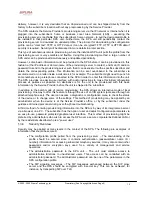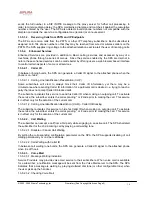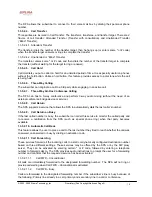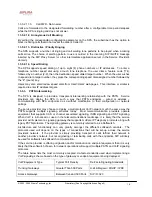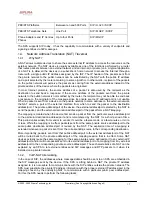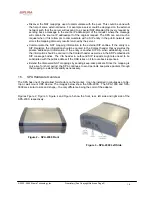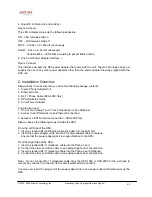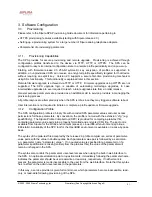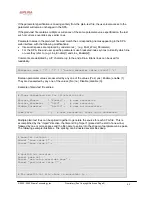
© 2003 - 2005 Sipura Technology, Inc
Proprietary (See Copyright Notice on Page 2)
7
1. Product Description
This guide describes basic administration and use of the Sipura Technology SPA-2000 phone
adapter – an intelligent low-density Voice over IP (VoIP) gateway. The SPA-2000 enables carrier
class residential and business IP Telephony services delivered over broadband or high-speed
Internet connections. By intelligent, we mean the SPA-2000 maintains the states of all the calls it
terminates. It is capable of making proper decisions in reaction to user input events (such as on/off
hook or hook flash) with little or no involvement by a ‘middle-man’ server or media gateway controller.
Examples of proper reactions are: playing dial tone, collecting DTMF digits, comparing them against a
dial plan and terminating a call. With intelligent endpoints at the edges of a network, performing the
bulk of the call processing duties, the deployment of a large network with thousands of subscribers
can scale quickly without the introduction of complicated, expensive servers. As described later in
this section, the Session Initiation Protocol (SIP) is a good choice of call signaling protocol for the
implementation of such a device in this type of network.
1.1. Introduction
The phenomenal growth of broadband Internet access (DSL, Cable, FTTH, etc.), has brought the
realization of reliable packet switched IP Telephony Services with circuit switched toll-quality and
subscriber feature transparency with that of the PSTN’s CLASS feature-set. In addition to basic
offerings comparable to traditional PSTN services, many service providers have integrated their IP
Telephony offering with a large number of web-based productivity applications like unified messaging
and call management features such as, remote call forward configuration via the web. Such advances
over traditional phone services, with equal or better voice quality and lower per-minute prices, have
made IP Telephony service a viable business. In fact, IP Telephony service providers in the US and
abroad have seen their subscriber base growing at a rapid pace.
Important!! Please note:
The information contained herein is not a warranty from Sipura
Technology, Inc. Customers planning to use the SPA-2000 in a VoIP service deployment are warned
to test all functionality they plan to support in conjunction with the SPA-2000 before putting the SPA-
2000 in service. Some information in Section 1 of this guide is written for educational purposes and
describes functionality not yet implemented in the SPA-2000.
1.2. Large-Scale
Deployment of VoIP Endpoints
The technical challenges in deploying and operating a residential IP Telephony service, however, are
not small. One of the main challenges is to make the service transparent to subscribers: The
subscribers shall expect to use their existing phones to make or receive calls in the same way as with
the existing PSTN service. To enable this level of transparency, the IP Telephony solution has to be
tightly integrated. A key element in this end-to-end IP Telephony solution is the provision of an
endpoint device that sits at a subscriber’s premises that serves as an IP Telephony gateway or
telephone adapter. This phone adapter offers one or more standard telephone RJ-11 phone ports –
identical to the phone wall jacks at home – where the subscriber can plug in their existing telephone
equipment to access phone services. The IP Telephony gateway may connect to the IP network, like
the Internet, through an uplink Ethernet connection.
1.2.1.
Voice Quality Overview
Voice Quality perceived by the subscribers of the IP Telephony service should be indistinguishable
from that of the PSTN. Voice Quality can be measured with such methods as Perceptual Speech
Quality Measurement (PSQM) (1-5 – lower is better) and Mean Opinion Score (MOS) (1-5 – higher is
better).


